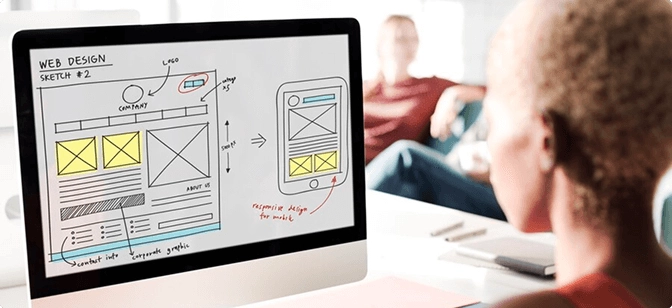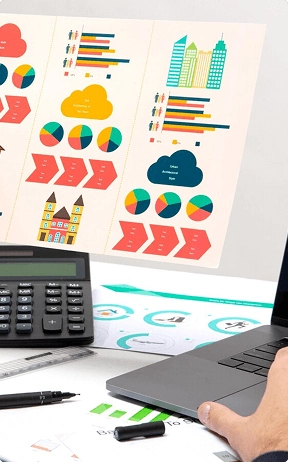
Streamlining UI Development for Large-Scale Projects
In this article, we’ll explain what designops is, why it’s gaining more popularity today, and why businesses need it.

Everyone has heard about DevOps (Development Operations) — a methodology for interaction between developers, testers, and other IT specialists. However, fewer people are familiar with the term DesignOps (Design Operations), which is gaining more popularity. The Team Lead at Attico, Olga Tsiamliak, explains what DesignOps is, what it is needed for, and what business problems it helps to solve.
DesignOps is the practice of building and maintaining the operational systems that allow design teams to deliver consistent, scalable, and high-impact outcomes across the product lifecycle.
DesignOps is about making design more efficient, consistent, and connected to the product and the business. Think of it as the system that powers great design work. Instead of designers being stuck in chaos, with miscommunication, unclear goals, or inefficient processes, DesignOps helps create structure. It brings everyone on the same page: designers, developers, and product teams. One of its key roles is to connect design with development and all other functions — product, research, marketing — so that everyone speaks the same language and works toward shared goals.
In the past, design was just a step. A designer made a mockup. A developer built it. Done? Not anymore. Today, designers go deeper — they think about users, business goals, and real feedback.
A global survey of design operations states that about 54% of respondents have already switched from design or design leadership to DesignOps. What is the reason for such a significant “migration”? And does every design team need this transition?
Consider a typical situation where there is disagreement between design and development teams. When a designer presents a project, developers can often react with confusion: how to implement this creativity into reality. Or the designer changes something in the layout at the last moment, and the developer spends several hours checking what exactly has changed. Sounds familiar? No wonder, collaborative workflow between designers and developers is an issue in almost every company.
So, let’s see what challenges can be addressed by implementing DesignOps.
Omnichannel is a major trend that gives businesses a competitive edge, enabling them to stand out and succeed in today’s market. An inconsistent omnichannel experience, where a business fails to deliver a seamless customer journey across various touchpoints, can result in customer frustration, lost revenue, and increased churn.
Imagine you update the logo on the site. You need to do the same in the mobile app, email newsletters, social networks, presentations, banners, and employee training platform immediately. This means reaching out to multiple teams, leading to delays, extra effort, and higher costs.
With the DesignOps approach, you can create a single design that can be applied across all channels efficiently, without unnecessary coordination, and with minimal time and effort.
Designers today work differently: they need to cooperate with more people than ever before. They are now part of big-picture conversations, and most companies already understand the value they bring. These changes show just how important DesignOps has become.
Designers report that along with their regular work — designing and researching — they may now also be caught up in strategy, meetings, and planning. It’s a lot. Sometimes they are so busy that they barely have time to design.
It gets even more complex when teams are spread out by location or product. Many designers work inside small, focused teams and don’t connect with other designers as much. Meanwhile, the experiences they build are getting bigger and more complex. Decision-making and workflows are scattered.
To deal with all this, you need to scale design the smart way — by applying design thinking not just to products, but to how users utilize it. DesignOps builds a culture where design is part of strategy, not an afterthought. It brings shared processes, shared language, and shared context, so design is part of the conversation from strategy to launch.

DesignOps focuses on four key layers:
1. Design culture
2. People
3. Ways of working
4. Tools & Infrastructure
Let me break it down for you.
Design is integrated into the company’s processes and is focused more on user needs than on individual preferences. Decisions are guided by user behavior and data, ensuring the product works effectively for its audience. Design is not an isolated function. It must be understood and embraced by everyone: the marketing team monitors brand integrity, while the product owner understands that elements can’t be just changed because there is user logic behind them. In such a culture, the designer is not a service provider, but an equal participant whose decisions help make the product intuitive, consistent, and effective for business.
If you organize work and communication with employees correctly, this will have a positive impact on the long-term health of project teams. To do this, it’s necessary to create role maps, determine career paths for designers, and optimize the processes of recruiting and onboarding personnel.
This level provides structure for the teams’ work — from the task acquisition stage to the review stage and inter-team approval. It is important to define the design stages in the product lifecycle for connecting the product and developers as early as possible.
The foundation of this level is providing the right software, like Figma, so everyone designs in the same space. A well-built multi-layer design system with clear documentation and proper version control is a good example of how to maintain consistency across components.
At Attico, we provide design system development services to help organizations establish a unified design language, streamline collaboration between teams, and accelerate product delivery.
The process for the client can consist of five steps. First, you need to determine what stage the design team is at. Then you must identify pain points, set priorities, and create a roadmap. The next step is implementing and maintaining changes. And the final chord measures success: what was changed, and how the team grew. Let’s talk about each step in more detail.

DesignOps doesn’t just make designers’ lives easier. It turns design into a strategic, scalable capability and strengthens the results.
Some key benefits that come to mind right away are faster time to market, high quality and consistent style, better alignment between teams, increased design influence, and reduced TCO. Let’s take a closer look at each of these benefits.
Faster time to market
Clear roles for employees, understandable processes, and convenient tools streamline the workflow so that there is simply no room for delays and bottlenecks. Previously, a designer could wait for feedback for several days, but thanks to DesignOps processes, regular sprints are organized to demonstrate results and exchange opinions. Also, standardized processes allow layouts to be sent to development not after 10 edits, but after 2 or 3 ones.
Consistent style for product recognition
When all participants use the same library, components, fonts, and colors, there is no variation in styles. The site and mobile application look like a single product to the end user since all components of the design system, right down to the alignment of the buttons, are the same. Designers use standard tools, and things like design pipelines, version control, and review processes help keep everything consistent across products and platforms.
Teams work in unison
DesignOps brings order: designers, product managers, and developers follow the same clear processes and use tools everyone can easily understand. Instead of asking, “Where is the layout?” and “What version is this?” Everyone sees tasks in Figma and Jira, and knows when and who does what. As a result, there are fewer reworks and misunderstandings.
The impact of design can be measured
DesignOps helps measure the impact of design on the product and the business. For example, the team tests how a new interface affects conversion. The test results show that the indicator has increased. This can be shown to management and proving the team’s value to the business.
Employees are happy and don’t burn out
Streamlined processes eliminate chaos, designers know what is expected of them, and do their work systematically. Instead of “we’re redoing it for the fifth time” — a clear brief and a transparent process. Instead of “it’s all on me” — assigned roles. The result: more involvement and less turnover.
DesignOps bridges gaps between design, product, engineering, and business by introducing standardized processes, tooling infrastructure, governance models, and performance metrics. So we can say that it’s the glue that keeps design strong, scalable , and fully integrated into the product.